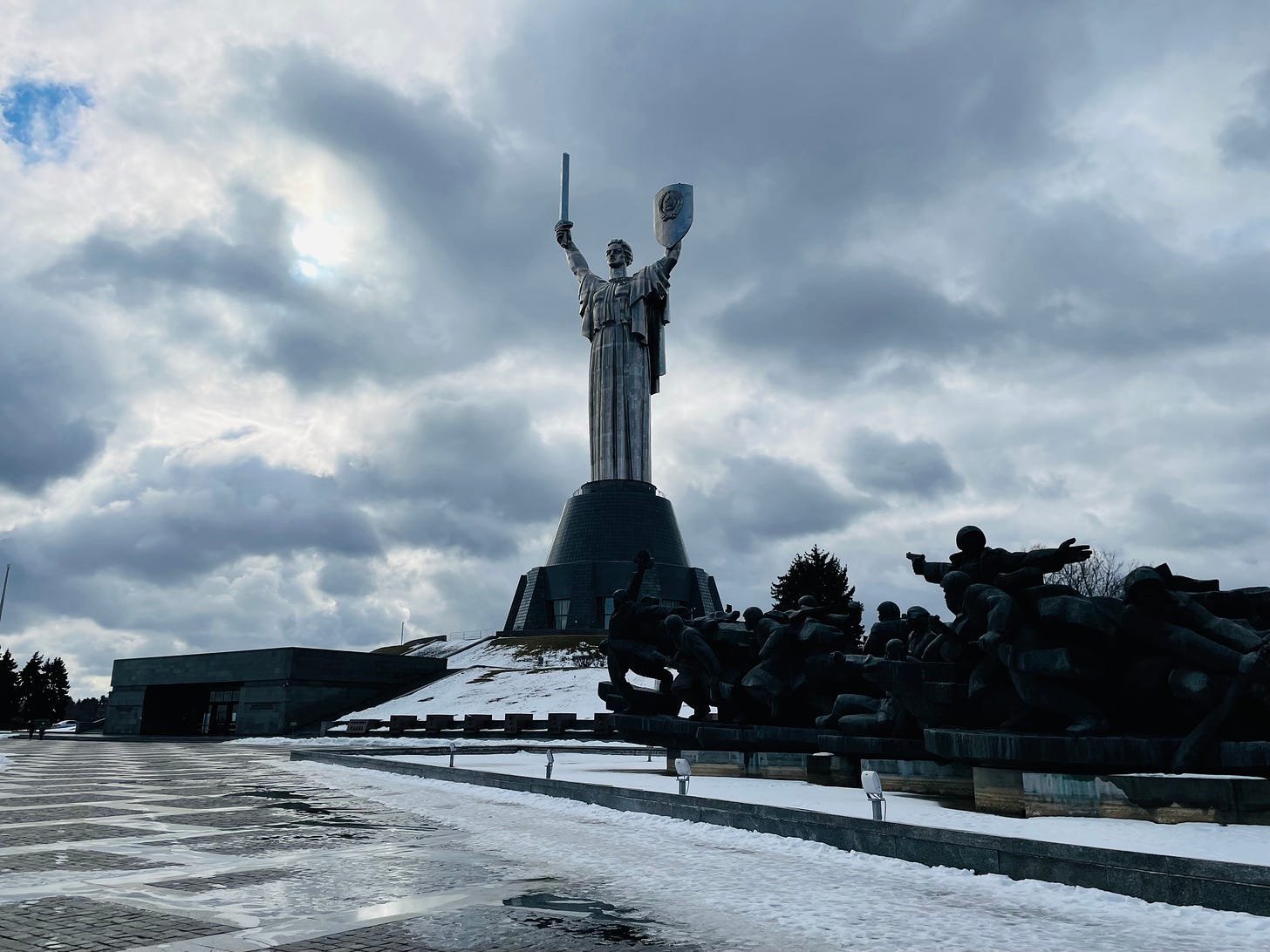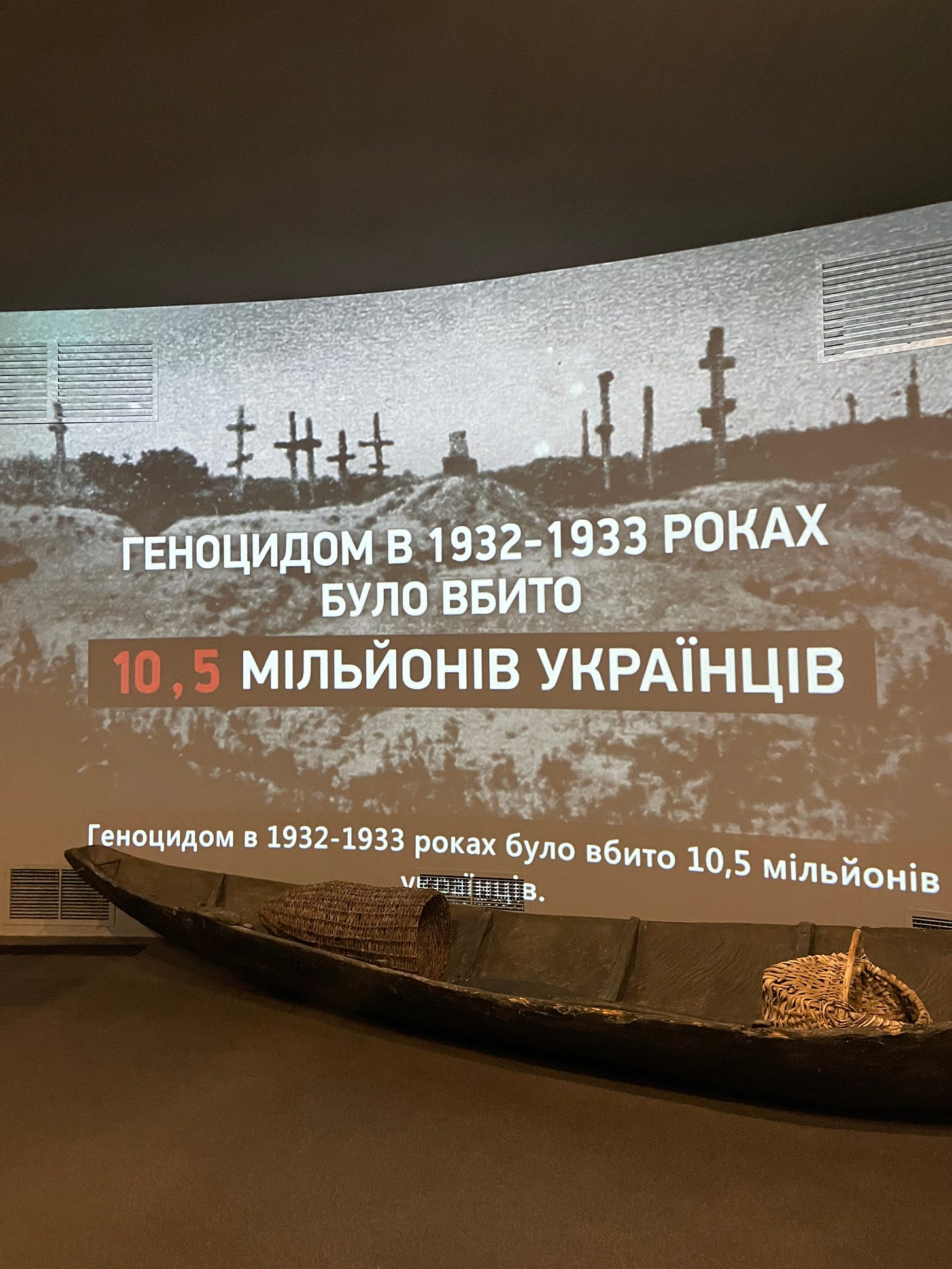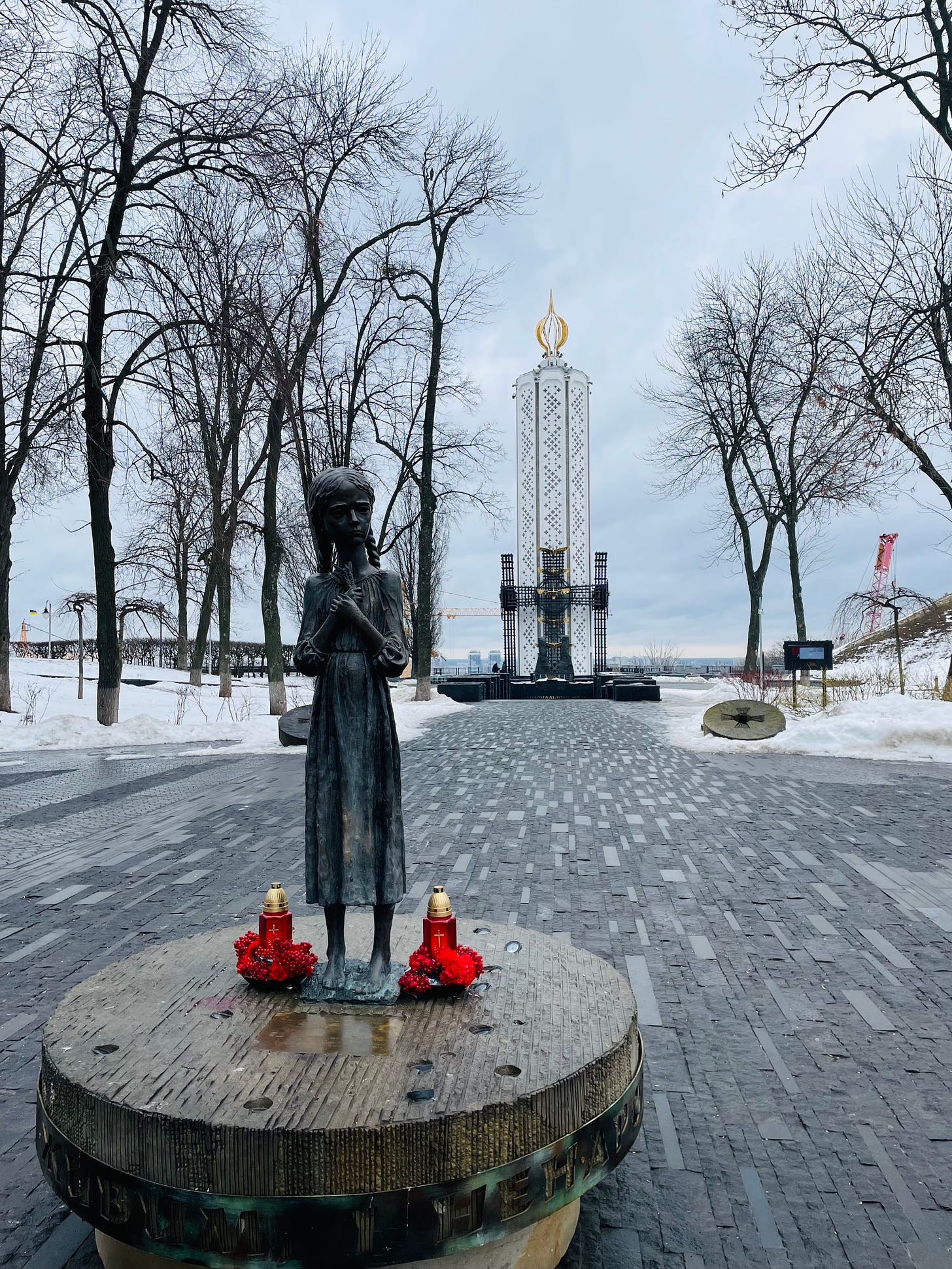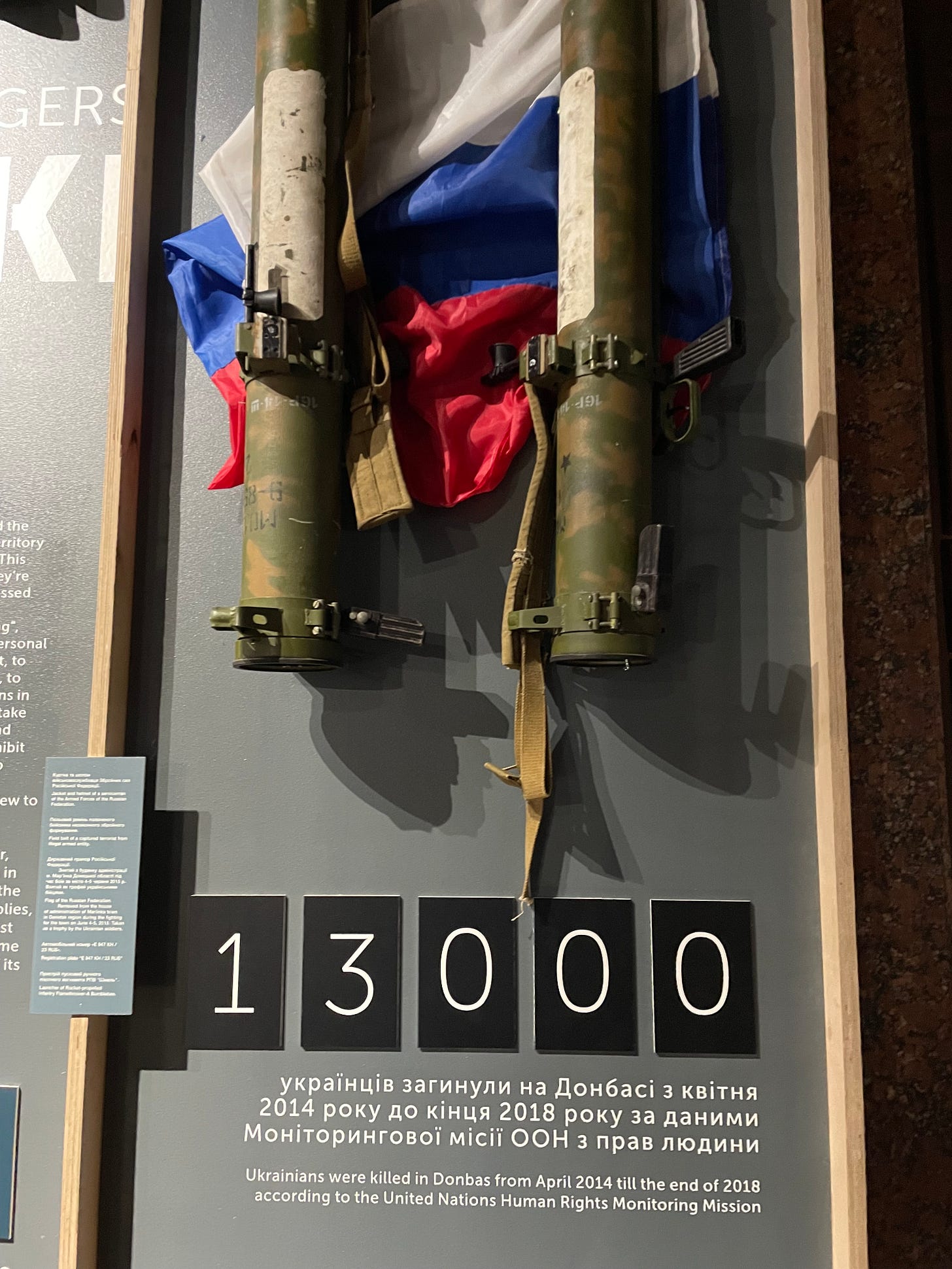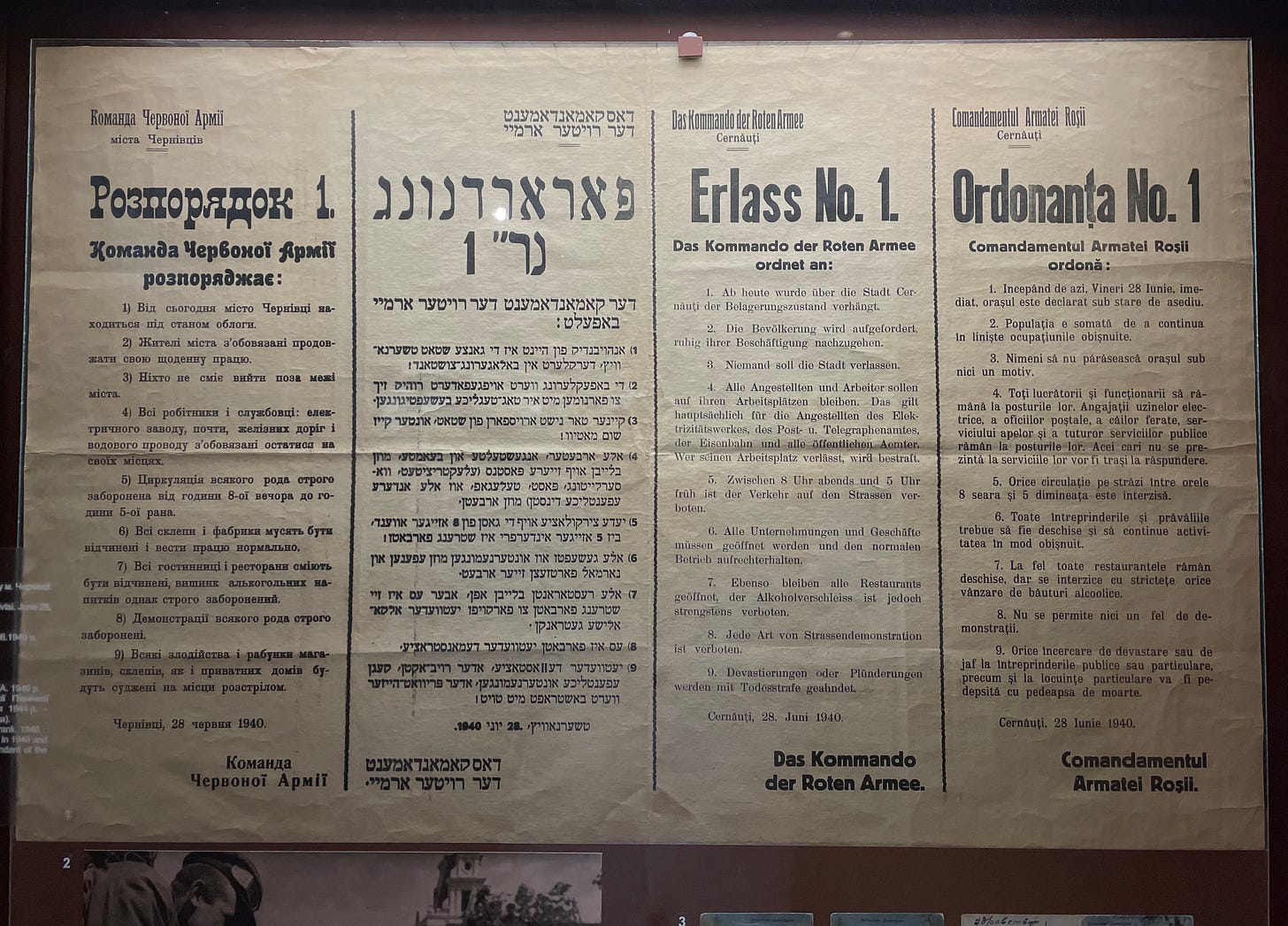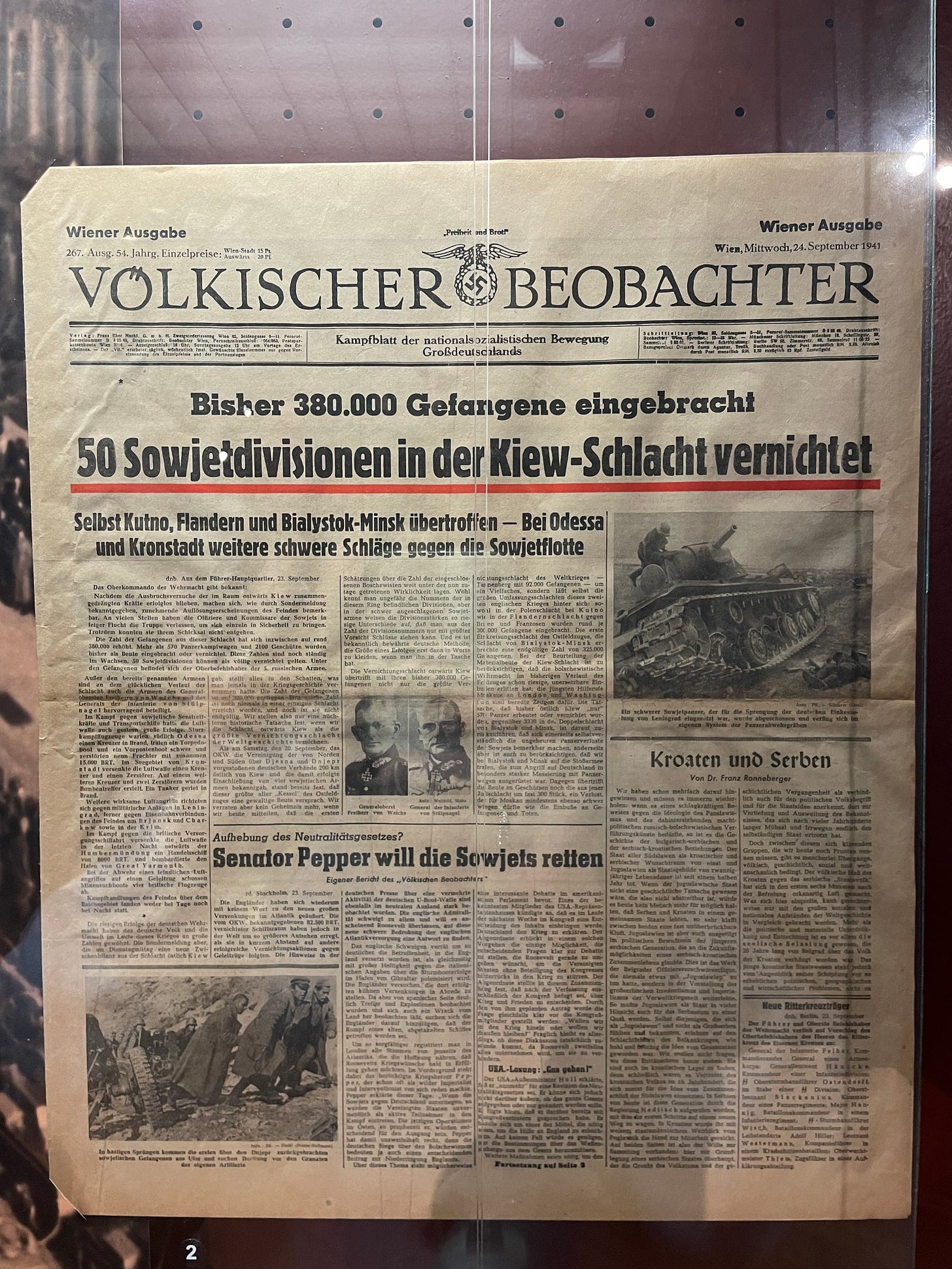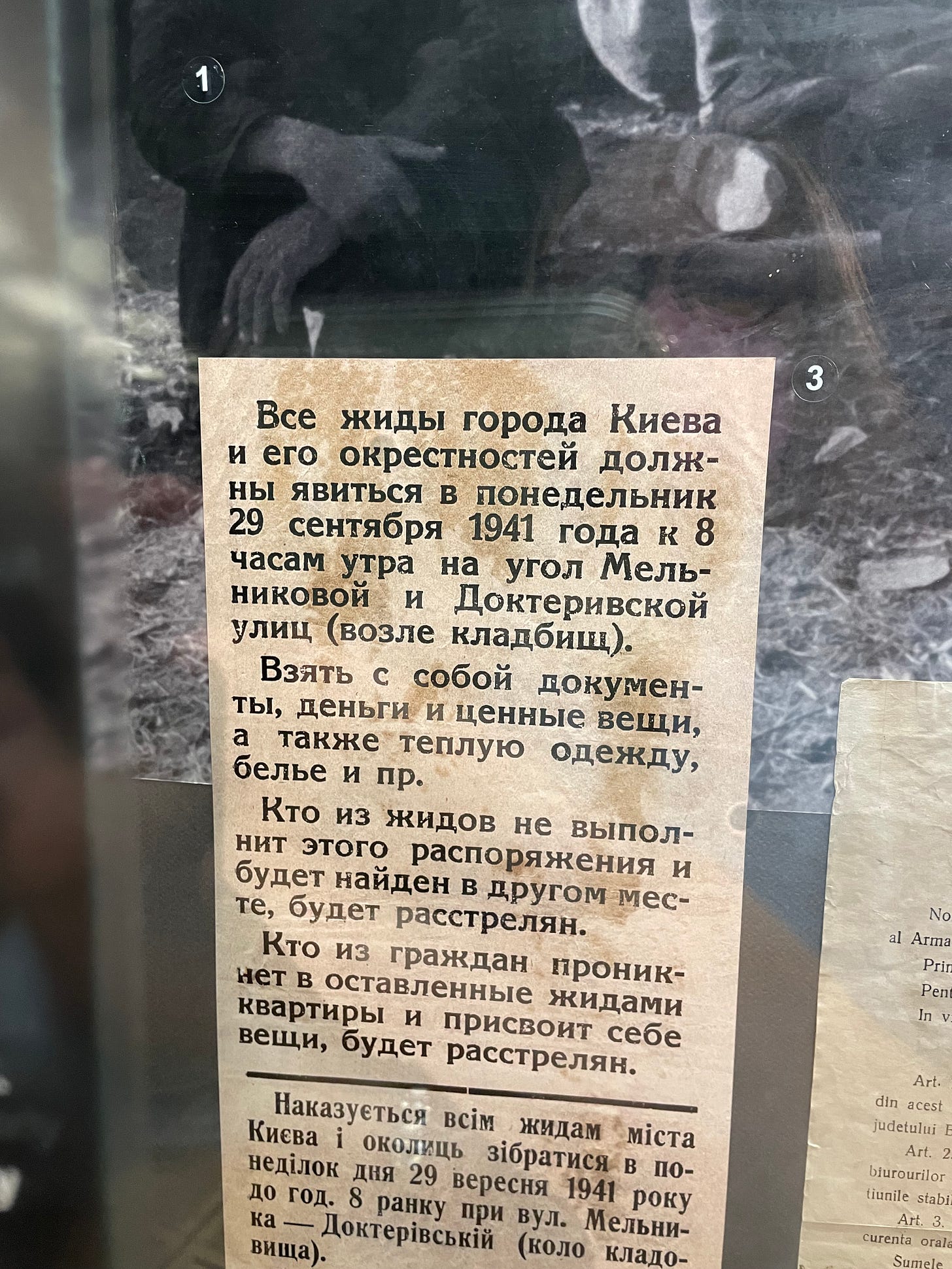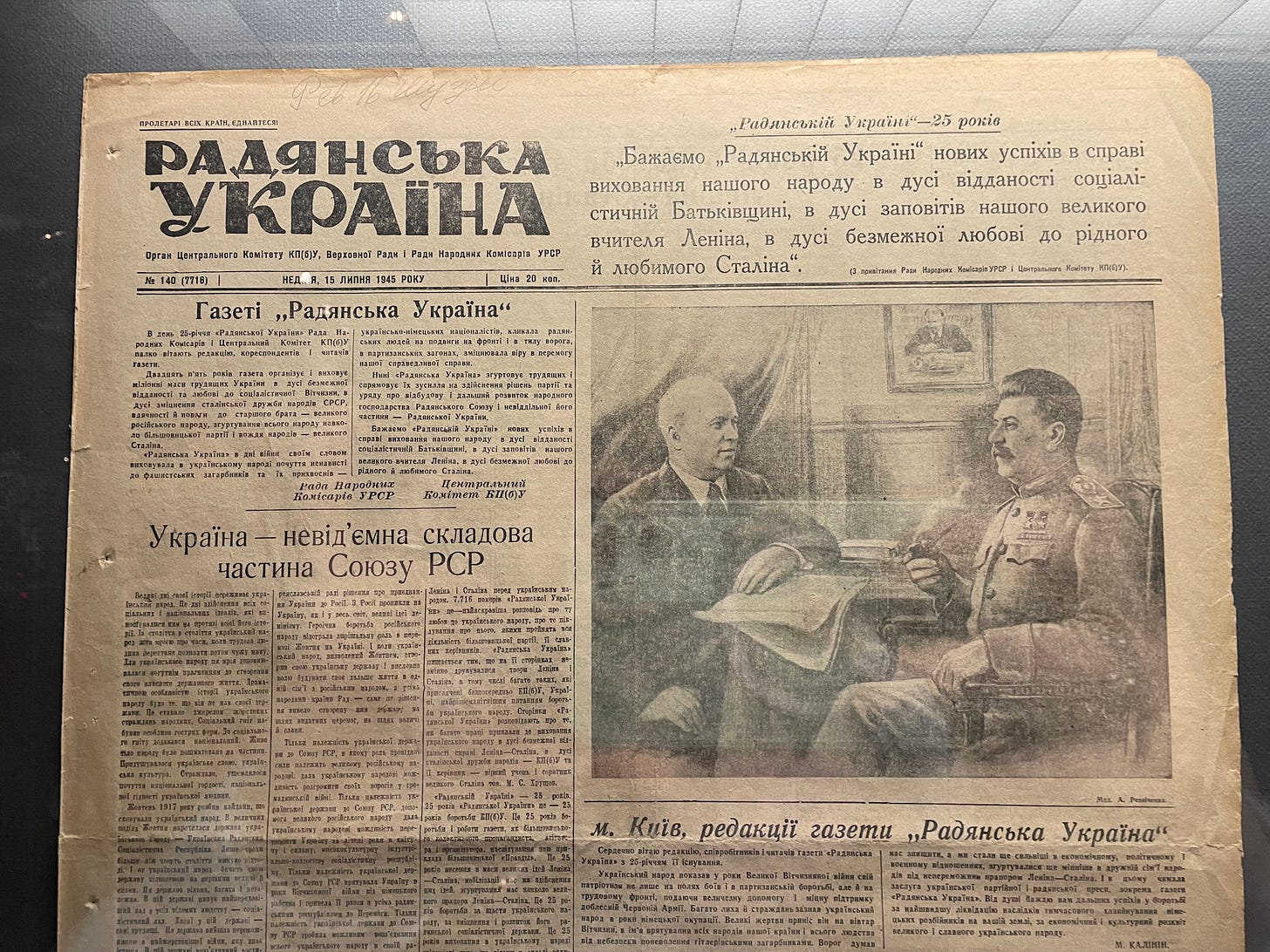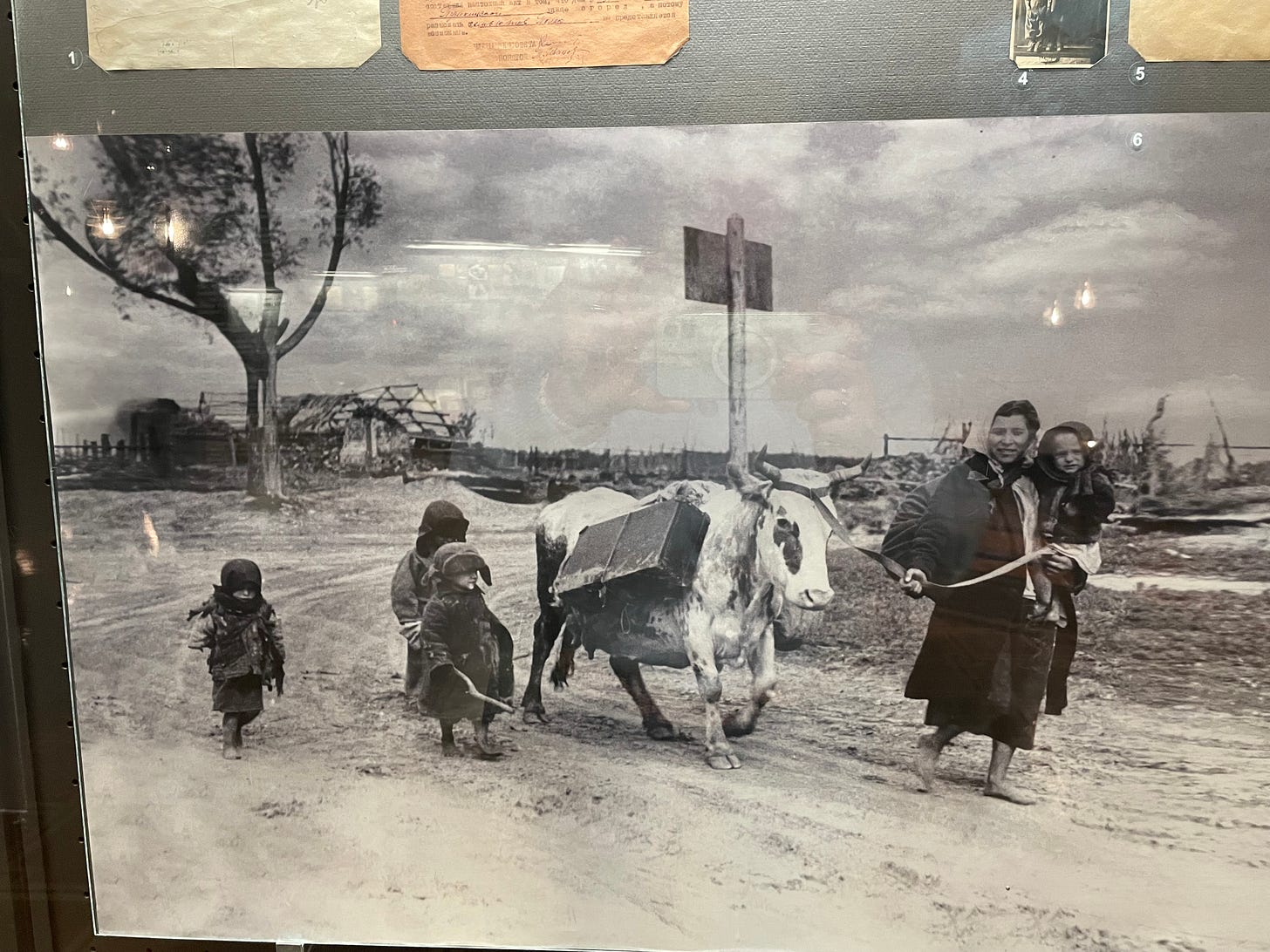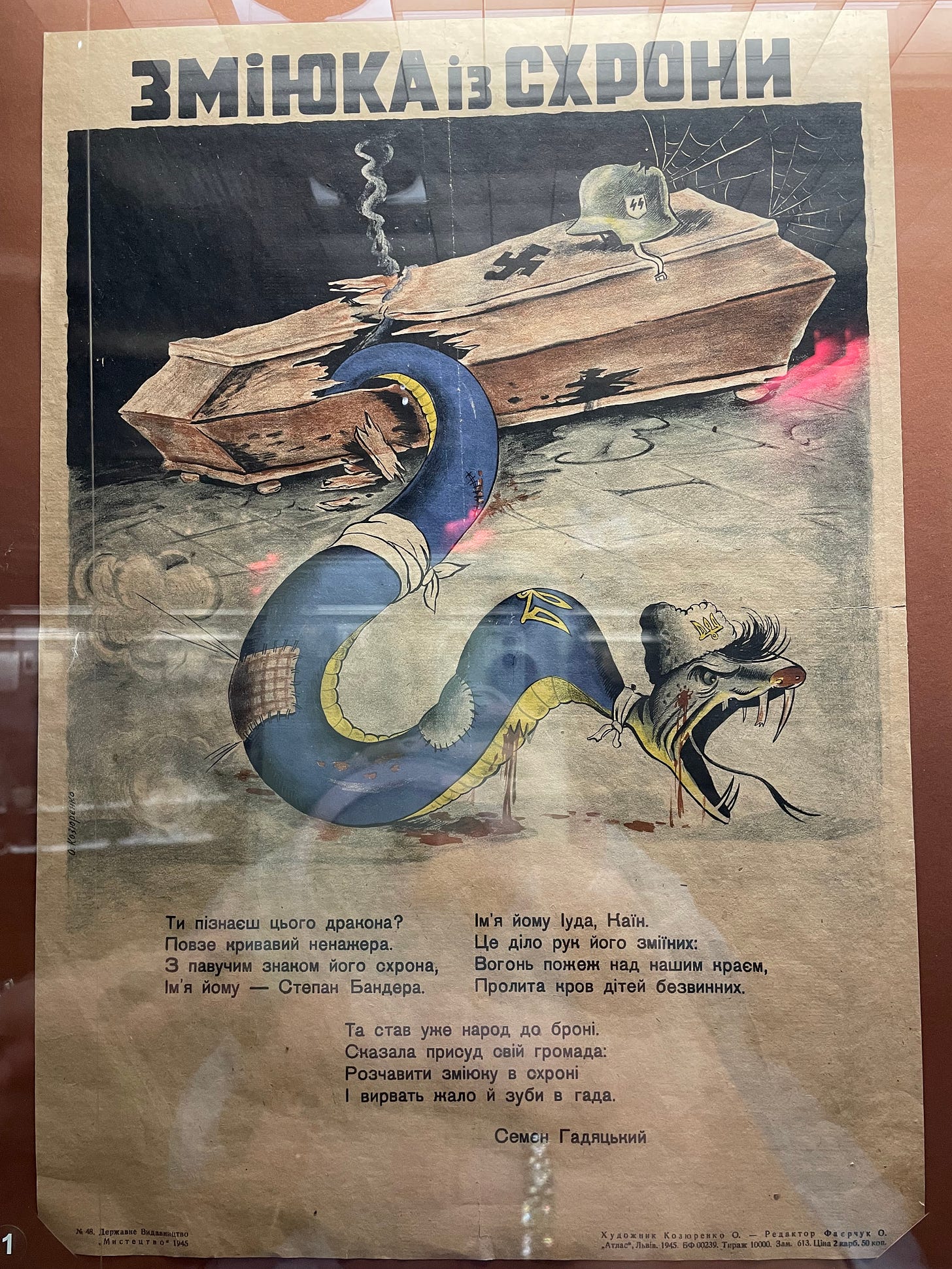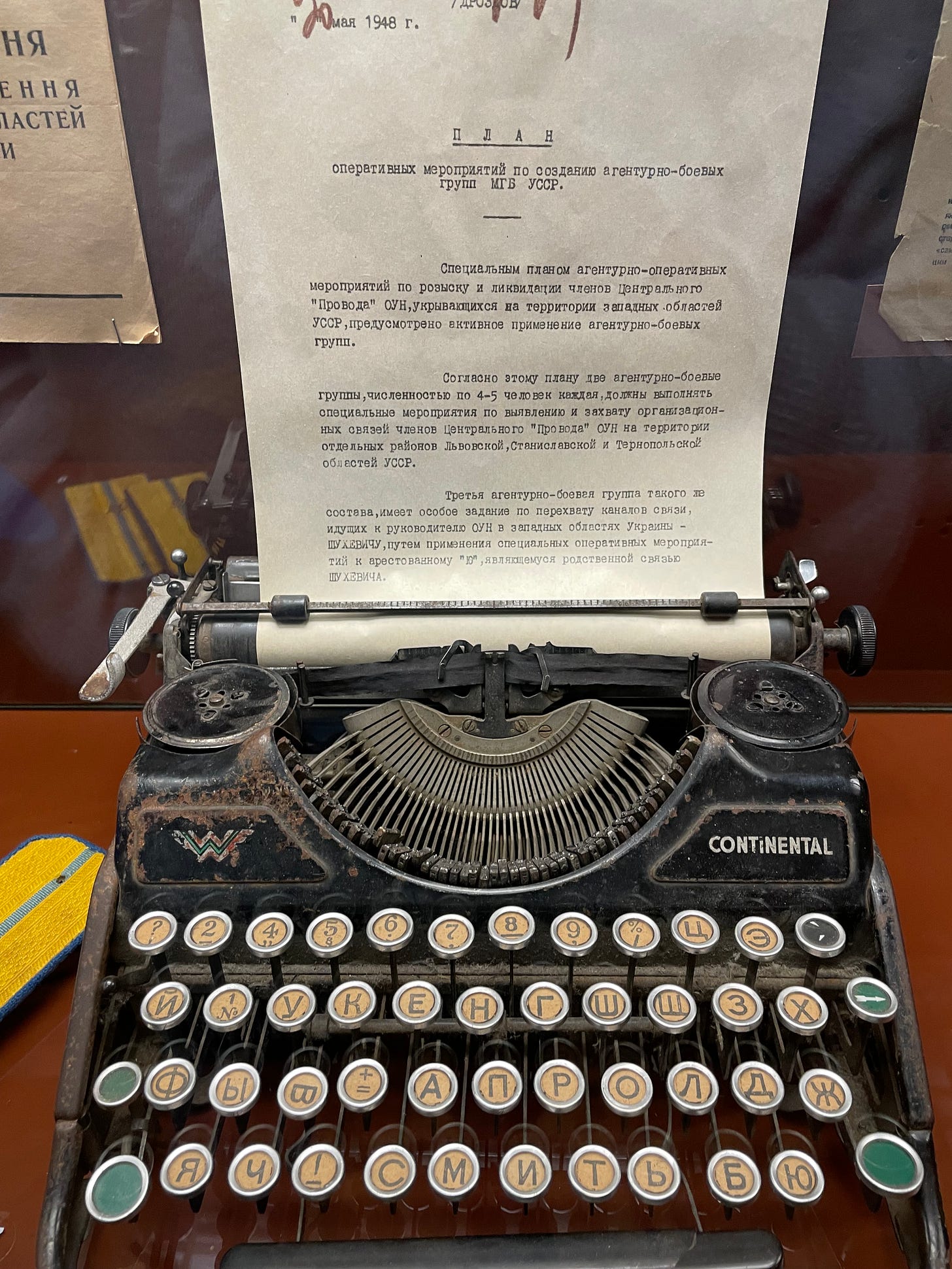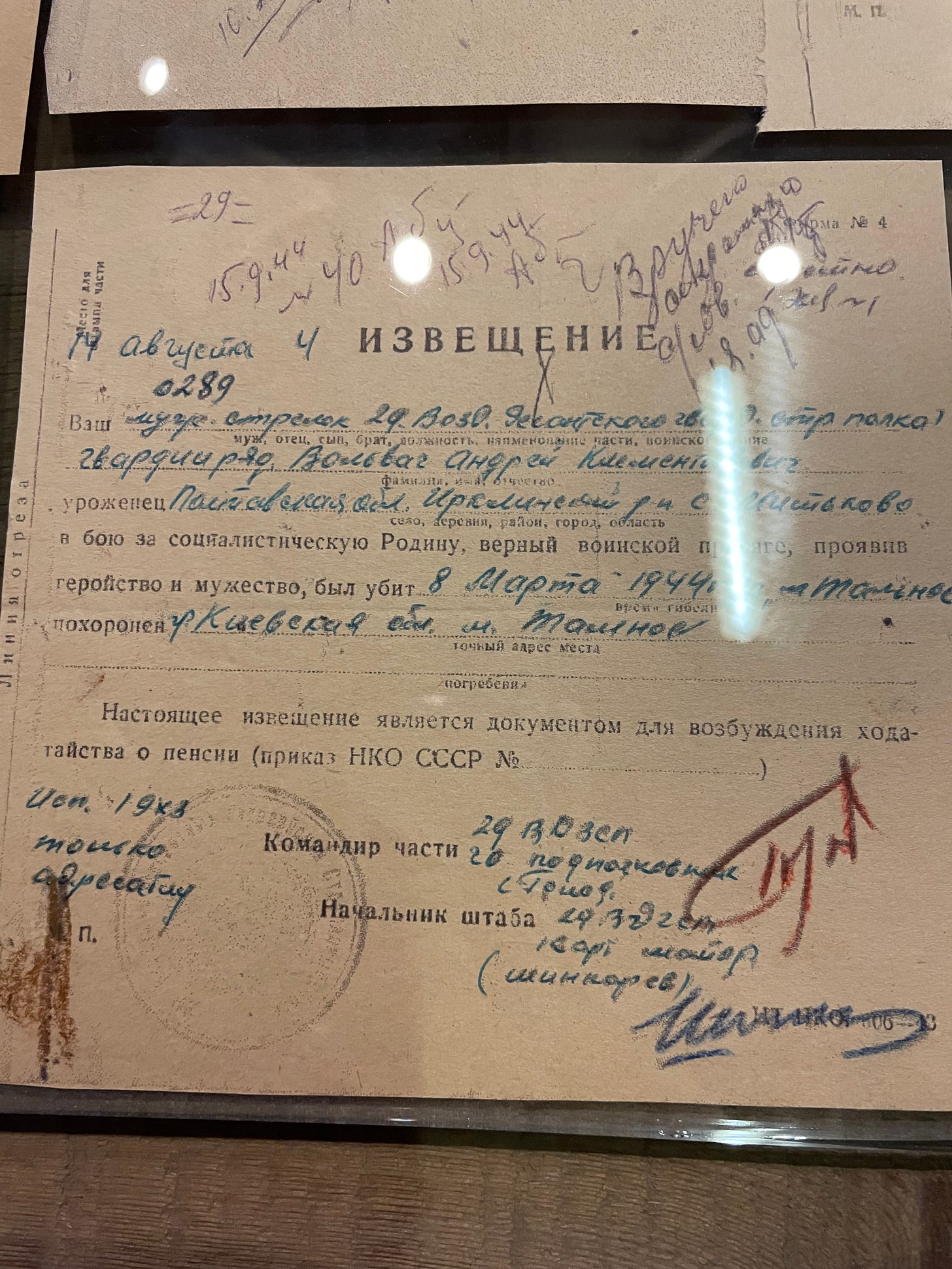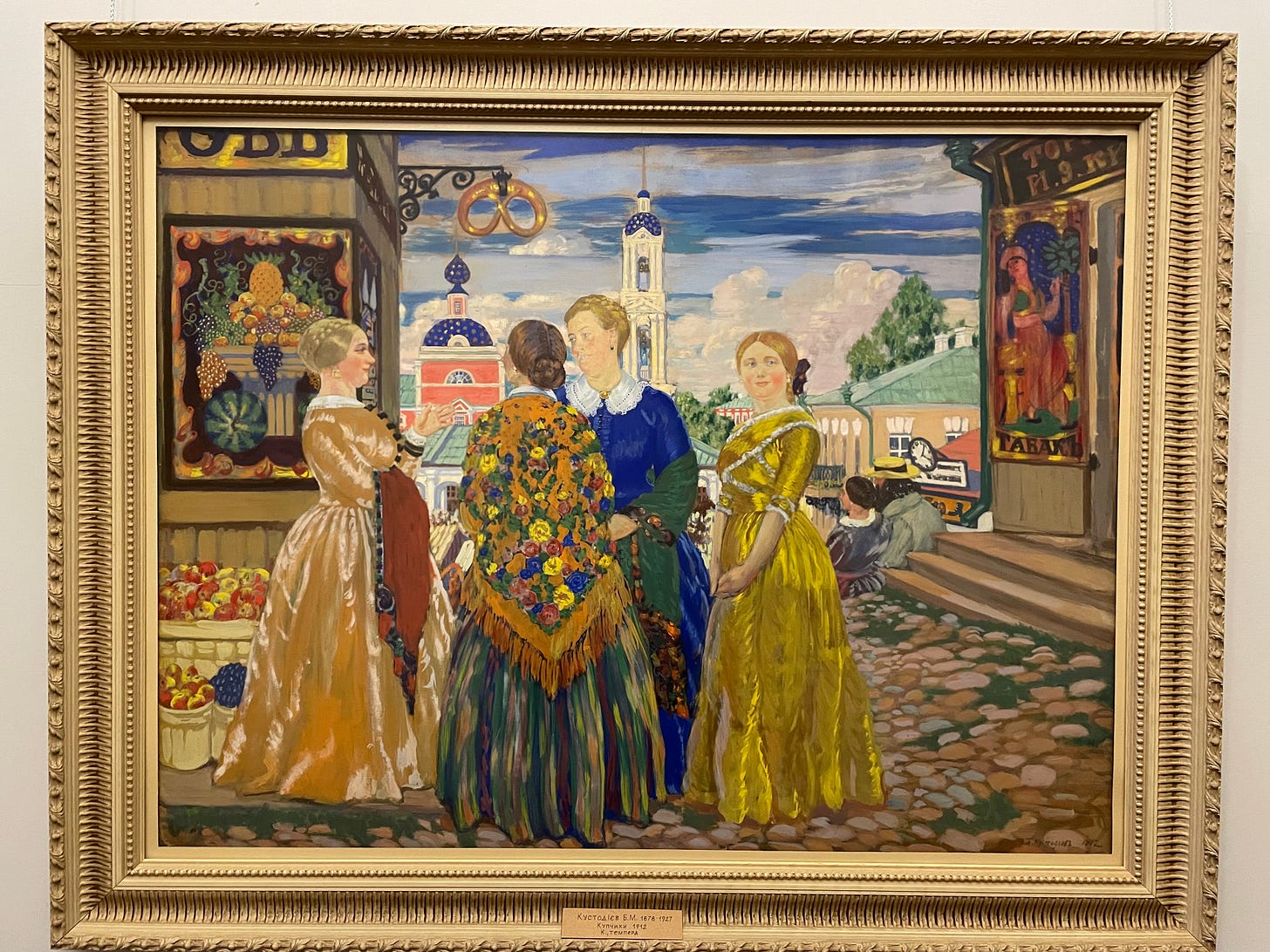Ukraine 20th century history lessons
Holodomor genocide museum, Ukraine in WWII museum, Kyiv National Art Gallery.
My time in Kyiv has felt like I have experienced each era of Ukraine’s history in reverse chronological order. After another great little cafe discovery, I headed towards the world’s deepest subway station to make my way to the National Museum of the Holodomor Genocide and the giant Motherland statue, below which is the National Museum on the History of Ukraine in the Second World War. It takes about five minutes to emerge from the subway on two escalators both so long you can’t see the top of them when you get on and look up. I hold on tight and try not to have panic attacks, because I have a terrible fear of heights, while others stand without holding or even backwards and read their phones, cuddle with their boyfriends, etc.

The Holodomor museum and memorial is located in a park which also has a monument to the unknown soldier. There were fresh flower wreaths placed there from Turkey and Estonia. I have read some but not a lot on the Soviet-created famine in Ukraine between 1932-33 during which millions perished, but in essence: Stalin wanted to seize grain from Ukraine for the entire USSR and also did not trust the Ukrainian peasants to become good Soviet citizens so he punished Ukraine especially hard, taking all their grain by force. The famine was man-made and horrendous. It is now considered a genocide by historians. The museum estimates the total deaths in Ukraine at 10.5 million people.
The museum is small, interactive, and very moving. I was struck by books they had with the names of those who perished from every region of Ukraine. They were massive with small print and every page you opened you saw lists of entire families with ages ranging from babies to the elderly. I watched a video about Kharkov, in the east of Ukraine, where buildings doubled as morgues because people came to the city from the countryside in search of food and died there on the spot. German foreign minister Baerbock also visited the museum a few days ago and lit a candle. To learn more about this period in Ukraine’s history, do read Yale historian Timothy Snyder. Here, a link to his lecture on the subject.
I only learned now that the statue out front of a little girl was actually vandalised recently. She was since restored and the candles you see in my photo are the ones placed by the German foreign minister a few days ago.
I continued walking past the Kyiv Pechersk Lavra, past many old tanks and airplanes on display (a strange contrast to the golden church domes which dominate the neighborhood), to the giant Motherland statue and museum on Ukraine during the Second World War.
The museum itself is under the statue. It has a very Soviet feel, down to the enormous empty garderob in the basement and the bad furniture, but the exhibits are exceptional. I took a ridiculous amount of photos because I was simply in awe of the historical documents in front of me. But before you get to WWII, there is a new exhibit in the entrance hall on the current active conflict in eastern Ukraine which has been underway since 2014. That I was not expecting (see Ukrainian East).
I walked into the hall and the first thing I saw was a TV screen showing Russian Channel One news reporting on the war in Donbass. It was really jarring. There are shot-up cars, torn up flags, multimedia displays, many, many facts and even signs taken from the Donestk airport. It definitely felt like modern Ukraine patriotic propaganda, but in a more subtle (western?) way than the Kremlin usually produces the Russian version. I can imagine visitors might find the exhibit quite moving. This was a display on the number of people in Ukraine killed by pro-Russian forces; I believe the figure now is closer to 14,000.
You then make your way upstairs to one of the best museums I have ever seen on the Second World War because it covered the periods before and after, too. It was essentially a crash course in 20th century Ukrainian history. This sign was hung up in Ukrainian, Yiddish (I think?), German and Romanian during the Red Army’s annexation of Bessarabia (in Chișinău, today’s Moldova) in 1940, as part of the deal Stalin made with Hitler, or the infamous Molotov-Ribbentrop pact. The four languages, not even including Russian, just killed me. Reminded me of how in awe I am of everyone here being trilingual at a minimum and it’s just no big deal to them.
Next, a Nazi newspaper from 1941, the Vienna edition, about 50 Soviet divisions being “destroyed” in Kyiv.
The tragedy of Babyn Yar, during which is not yet properly memorialised in Kyiv, but plans are underway for a large museum and memorial site. Over a few days in late September 1941, the Nazis shot and killed more than 33,000 Jews in the Babyn Yar ravine in Kyiv. They were ordered to report to the corners of Melnikova and Dokterivska streets at 8am on 29 September 1941, and bring their valuables with them. This is the sign that was hung, in Russian. It calls them the Russian language equivalent of “Yids”. It also states that other citizens who loot the abandoned apartments of the Jews will be shot.
This Soviet paper from 1945 is about bringing Ukraine back into the fold of the USSR after having pushed back the German army. It is printed in Ukrainian, and if I understand the bottom headline correctly, talks about Ukraine as an irreplaceable part of the USSR:
This photo is captioned as a woman and her children receive permission to return to Kyiv after the war is over. She is barefoot. I must have stared at the photo for a good ten minutes I could not get over it.
There was also a post-war section, and in particular, Soviet propaganda and a memorandum about their fear of a nationalist movement in the western parts of Ukraine that had spent the longest under Nazi occupation and in some cases welcomed the Germans. Note the imagery used:
This is a 1948 Soviet plan to deal with western Ukrainian nationalists:
The final section of the museum is an enormous wall of family photos, and a very long table with soldier’s drinking tin cups and death notices. I took photos of these two as they represented a pattern. Earlier in the war, the notes were handwritten in cursive, with details of how the solider died and where, that he was a hero, etc. By 1944, there was already a pre-printed form saying your son was killed in action, and only the details were filled in. Chilling. I just kept reading all the notices and then it was too much.
Pavlenko, Semyon Semyonvoich of Polavsky region, killed 7 September 1943 with handwritten place of burial (Sumy region).
Volvach, Andrei Klementievich, also of Pavlovsky region. Killed 8 March 1944 in Kiev region. The typed form already says “in battle for the socialist Motherland, having displayed heroism and courage, was killed ____”
There was also a very very small exhibit on the Holocaust but it didn’t even begin to really cover the topic, and I thought it’s long overdue that the Babyn Yar memorial project gets built.
I left with my head spinning about all the horrors Ukraine has been through in just the past 100 years and how people are still smiling and it’s just incredible if you stop to think about it. It also makes them that much more prepared for whatever Putin has in mind (I’m not going to try and guess but he would be nuts to think he can send his soldiers in here and have them met with open arms — quite the opposite)


The rest of my day was far more uplifting. I had a lovey time at the modest and not really renovated yet Kyiv National Art Gallery where I saw lots of Vrubel and other wonderful paintings without waiting in line (the exhibit in Moscow is sold out until March). I enjoyed a lovely coffee and cake at Lviv Handmade Chocolate and got my eyebrows done and a fabulous blow dry and finished the evening with an incredible meal at the new Israeli cafe SHALOM which I happened to find rather by accident because it’s on the walk from the world’s deepest subway station to the museums I just wrote about. You know, just Kyiv things.
I have really fallen in love with this city and will be quite sad to leave tomorrow. At 9am I am meeting my airplane friend Valentina the pensioner who asked if she could show me around a bit before I leave. How could I refuse?
For more photos from today, please see my Instagram.




